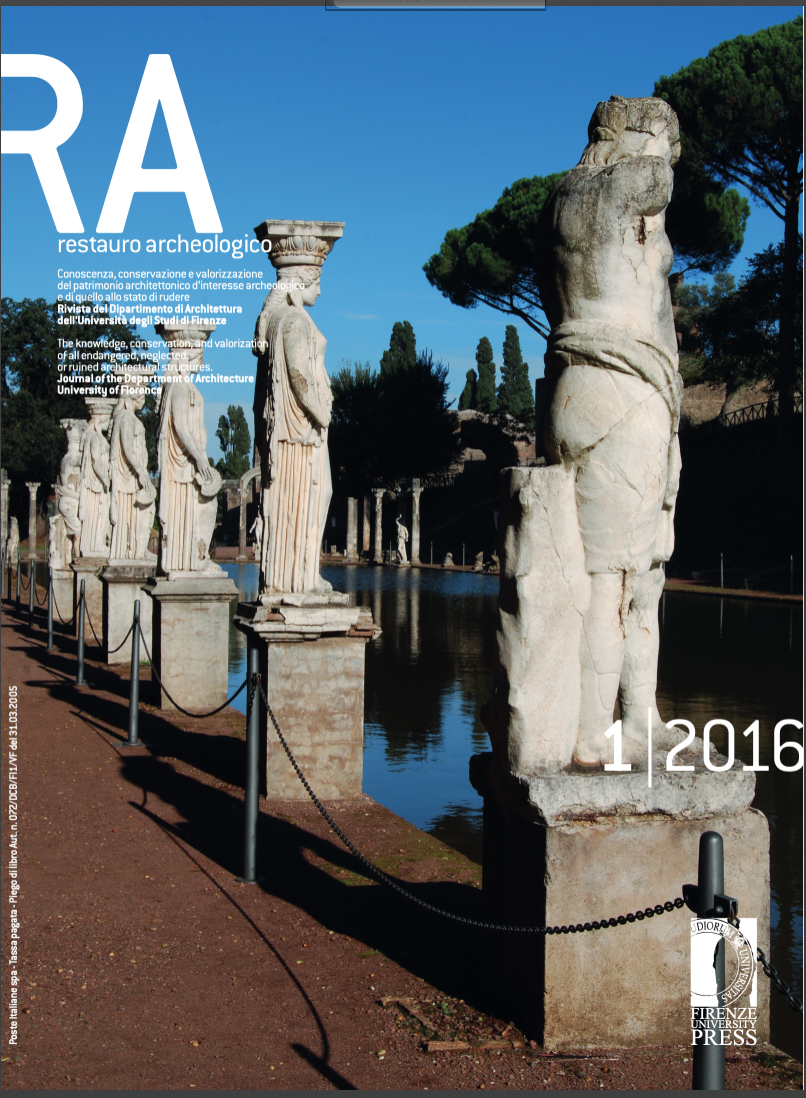Villa Adriana, esperienze di rilievo digitale ed analisi per il restauro e la musealizzazione dell’Edificio dei Pilastri Dorici
Published 2016-11-21
Keywords
- restoration,
- archaeological,
- enjoyment,
- communication
How to Cite
Abstract
To speak about restoration and enhancement of the great archaeological sites such as Pompei, Herculaneum, Agrigento, and Villa Adriana in Tivoli, just to name a few, means to raise questions regarding protection and safeguarding that often are not easily reconcilable with the use of the sites by tourists and scholars. We have previously proposed a first step regarding a surveying project, using 3D laser scanner digital technologies, for the realization of plans, sections, and reliable models to architectural scale and detail, to constitute the fundamental knowledge, base for any exercise of critical and interpretive activities related to training and the development of conservation and restoration activities. The construction of Villa Adriana began from around 117 A.D. by the homonymous emperor, as his residence outside Rome. It occupies an area of 120 hectares on the Tiburtini Mountains south east of Tivoli. In the nineteenth century, when the first restoration work began, the Kingdom of Italy partly purchased the Villa; the works had infiltrated almost all components of the villa buildings. In the central area of Hadrian’s palace there is the so-called Hall of Doric pillars, which probably welcomed those who were waiting to be admitted to the emperor’s presence. The conservation project of building structures was driven by the business practices and with the idea of protecting and safeguarding the artifact without providing for the reconstruction of the pillar system and / or the perimeter walls. The structural analysis of the system has highlighted the structural inadequacy of the peristyle portion rebuilt in 1956. The idea of this first experimental project is to present to visitors a knowledge and learning process, with multiple levels of historical and scientific study, based not only on exposure to passive objects or drawings, but on technological devices, touch screens, and projections, that allow the users of the spaces of the villa to travel back in time to the Hadrian period.


